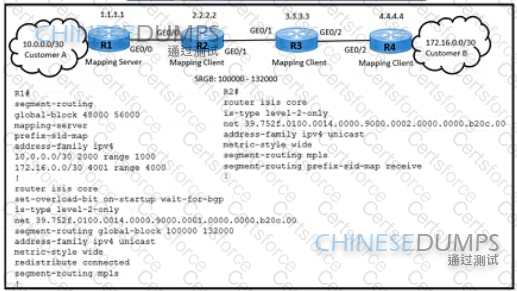
Refer to the exhibit. Customer A and customer B are connecting through a service provider network with these requirements
R1 acts as the mapping server to connect 10 0 0.0/30 and 172.16.0.0/30 networks
R1 and R2 are using nondefault SRG8 range to allocate SID.
R2 ads as the mapping client for transient traffic originating from customer A
Which configuration meets the requirements?
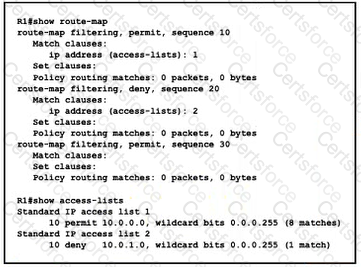
Refer to the exhibit A network engineer configured the redistribute connected subnets route-map filtering command on R1 to redistribute connected interfaces to the OSPF process The engineer also wants to filter out IP address 10 0 1 0/24. but the prefix still appears in the routing tables of the other routers on the network. Which action corrects the problem?
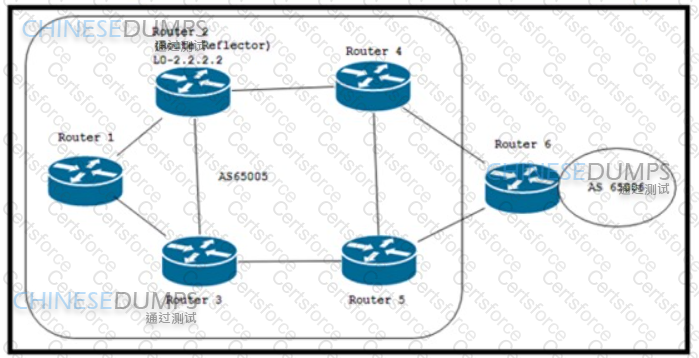
Refer to the exhibit. The initial BGP configuration of the network is complete, and all the routers have established BGP neighborship. The engineer configured Router 2 with additional BGP paths to install and advertise more paths to Router 1 and Router 3. Which configuration must the engineer apply to Router 1 and Router 3 so that they will use and install all additional paths?
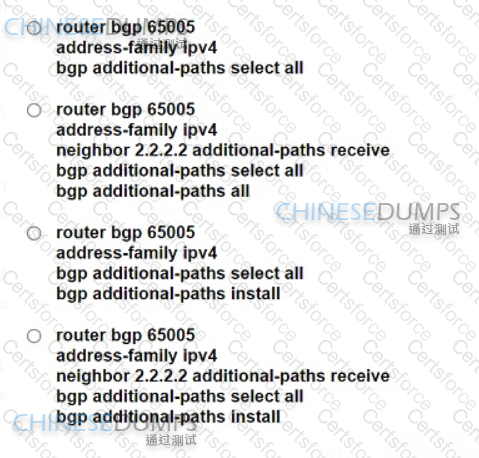


Refer to the exhibit. A network engineer is investigating a report of packet drops between the branch site and the central site.
The two sites are connected via OSPF and RSVP-TE tunnels.
Traffic from the central site to the branch site is passing normally.
Technicians at both sites successfully ping the loopback IP addresses on routers R1 and R2.
Which configuration corrects the packet-drop problem?

ION NO: 91
What are two major differences between OSPF and IS-IS routing protocols? (Choose two.)
Which lag command is used within route-map to redistribute routes that match with routes tagged with the specified tag numbers?
Refer to the exhibit.
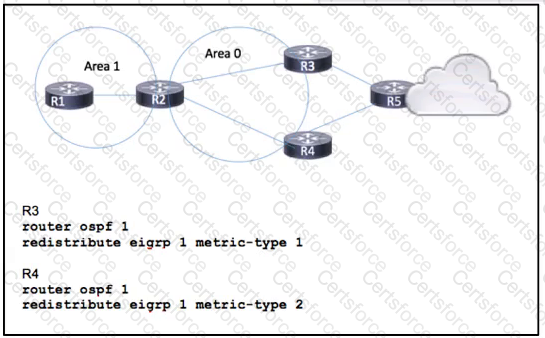
Routers R1, R2. R3, and R4 have been configured to run OSPF. and router R5 is running EIGRP Traffic from R1 to R5 is expected to pass via R4. but OSPF routing has calculated the best path via R3. Which action corrects the problem?
A network consultant is troubleshooting IS-IS instances to identify why a routing domains is having communication problems between the two instances. Which description of the possible cause of issues in the routing domain is true?
Refer to the exhibit.
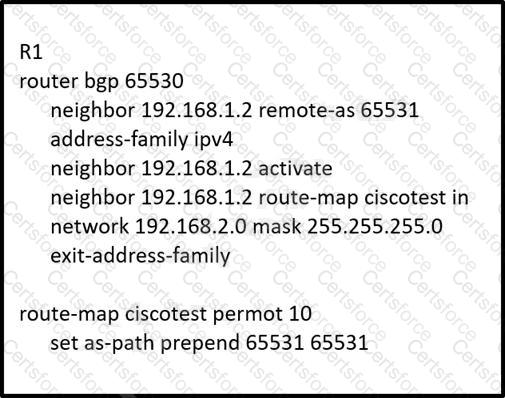
Routers R1 and R2 reside in AS 65530, which is multihomed to the Internet. A network engineer expects devices in the AS to use R2 to access the Internet, but they are using R1 as the exit point from the AS. Which action corrects the problem?
After changing the IP address on an IOS XR router, an engineer cannot ping the new address Which step did the engineer forget to complete?